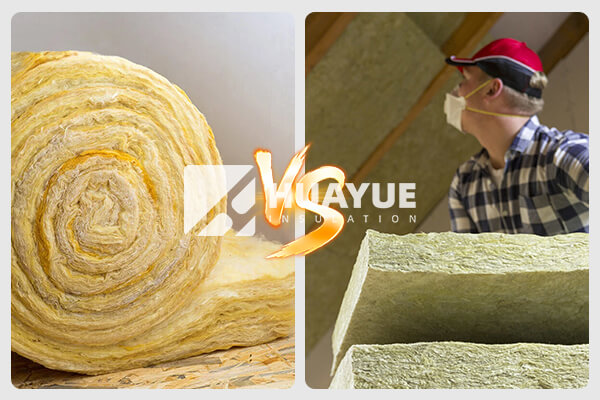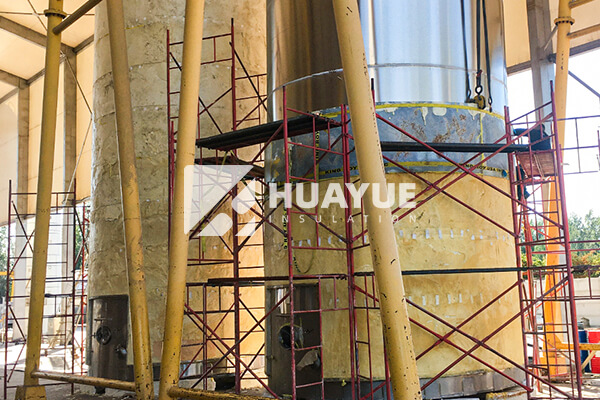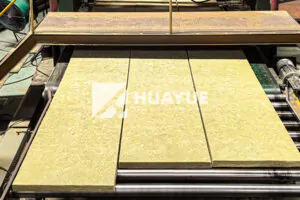What are the different types of mineral wool insulation?
Problems with poor insulation can lead to energy loss, high bills, and even safety concerns. Choosing the right mineral wool insulation is the first step to a reliable solution.
Mineral wool insulation comes in two main types: rock wool and glass wool. Both types provide excellent fire resistance, thermal performance, and sound insulation, but are made from different raw materials.

If you need insulation that prevents heat loss and protects your building, keep reading. I’ll break down how mineral wool works, what makes it unique, and answer questions about safety and lifespan.
What is another name for mineral wool insulation?
People often use different terms for mineral wool. This can cause confusion, especially when shopping for materials or planning installations.
Mineral wool insulation is also called man-made vitreous fiber or MMVF. Manufacturers sometimes refer to it as rock wool, slag wool, or glass wool, depending on the raw material used.
Let me clarify why the different names matter. “Mineral wool” is the umbrella term for insulation made from inorganic minerals. The two main types, as I mentioned before, are glass wool (made by melting sand or recycled glass) and rock wool (made by melting basalt or other rocks).
Sometimes in technical documents or building codes, you may see “man-made vitreous fibers” or abbreviations such as MMVF or MW for mineral wool. Construction professionals like Hans Müller want to know precisely what they’re buying, especially since each type has its own physical properties. Being clear about the name helps procurement and safety teams select the right product, avoid mistakes on-site, and ensure compliance with regulations.
| Name | Common Raw Materials | Defining Property |
|---|---|---|
| Glass Wool | Sand, Recycled Glass | Lightweight, soft, flexible |
| Rock Wool | Basalt, Diabase | Dense, rigid, high fire resistance |
| Slag Wool | Blast Furnace Slag | Similar to rock wool, usually used in industrial insulation |
No matter which name is used, the essential performance features remain the same: fire resistance, thermal insulation, and sound absorption.
Is there a difference between rockwool and mineral wool?
Manufacturers and builders often use “rockwool” and “mineral wool” interchangeably. People get confused and wonder if they are buying the right type for their needs.
Rock wool is a specific type of mineral wool, made by melting volcanic rock. Mineral wool covers both rock wool and glass wool, so rock wool is one category within mineral wool insulation.
Digging deeper, the production process makes the difference clear. Rock wool uses rocks like basalt, heated to high temperatures, then spun into fibers. Glass wool uses sand and recycled glass, melted and spun similarly. Both types share great insulation properties, but rock wool tends to have better fire resistance and compressive strength.
For example, in industrial tank insulation, I often recommend rock wool for areas that demand maximum stability and high-temperature resistance, like Hans Müller’s cryogenic tanks. The extra density helps rock wool stand up to mechanical stress and maintain its insulating value over decades. Glass wool is ideal for walls and ceilings in commercial buildings, where flexibility and ease of installation are key.
When specifying products, always check material datasheets and communicate clearly on site. This prevents confusion and ensures the chosen mineral wool matches the project’s requirements.
| Criteria | Rock Wool | Glass Wool |
|---|---|---|
| Raw Material | Basalt, Diabase | Sand, Recycled Glass |
| Density | Higher | Lower |
| Fire Resistance | Excellent | Excellent |
| Mechanical Strength | Strong | Moderate |
| Application | Tanks, pipes, industrial | Walls, ceilings, HVAC |
What is the life expectancy of mineral wool insulation?
Long-term performance matters. Facility managers want insulation that lasts, so they can avoid expensive repairs.
Mineral wool insulation has a life expectancy of up to 50 years, depending on installation, environment, and maintenance practices.
I advise clients that mineral wool’s durability depends on moisture protection and the right fit for the application. In a chemical plant,“`
What are the different types of mineral wool insulation?
Problems with poor insulation lead to high energy costs and trouble complying with safety standards. The right mineral wool insulation solves these problems and keeps buildings safe and efficient.
Mineral wool insulation comes in two main forms: rock wool and glass wool. Both types resist fire, absorb sound, and insulate against temperature changes.

If you have a tank or facility to insulate, the details matter. I’ll explain the differences, clear up confusing names, and address safety and lifespan concerns.
What is another name for mineral wool insulation?
Many people use different terms for mineral wool and get confused at the store or during installation.
Mineral wool insulation is also known as man-made vitreous fiber (MMVF), rock wool, slag wool, or glass wool. The name depends on the raw material used.
The variety of names relates to the manufacturing process. "Mineral wool" is the general label for insulation made from inorganic minerals. Glass wool uses sand or recycled glass. Rock wool uses basalt or similar rocks. Sometimes, makers call products slag wool (when using blast furnace slag) or MMVF (especially in official documents and standards). Clear names help buyers like Hans Müller make informed purchases, avoid mistakes, and choose products that meet safety codes.
| Name | Raw Materials | Main Property |
|---|---|---|
| Glass Wool | Sand, Recycled Glass | Soft, flexible, lightweight |
| Rock Wool | Basalt, Diabase | Dense, rigid, fireproof |
| Slag Wool | Blast Furnace Slag | Industrial insulation focus |
Is there a difference between rockwool and mineral wool?
Buyers often think rockwool and mineral wool are different. This leads to confusion about which product is best for their project.
Rock wool is a type of mineral wool, made by melting volcanic rock. Mineral wool includes both rock wool and glass wool, so rock wool sits under the mineral wool umbrella.
The difference is in the raw material and a few physical properties. Rock wool starts with basalt rocks, heated and spun into fibers. Glass wool starts with recycled glass or sand. Both insulate well and resist fire, but rock wool is better for high-stress and high-temperature settings like tank insulation. Glass wool is easier for places that need flexibility, like wall cavities. Knowing these facts is crucial when you’re ordering material for a specific industrial setup. I always check the datasheet and clarify with the supplier, ensuring Hans Müller gets exactly what his plant needs, especially for cryogenic or chemical tanks.
| Feature | Rock Wool | Glass Wool |
|---|---|---|
| Raw Material | Basalt, Diabase | Sand, Glass |
| Density | High | Medium |
| Fire Resistance | Excellent | Excellent |
| Load-Bearing | Superior | Moderate |
| Ideal Use | Tanks, Pipes | Walls, Ceilings |
What is the life expectancy of mineral wool insulation?
Long lifespan means fewer repairs and lower costs over time. That’s important to any facility manager.
Mineral wool insulation can last up to 50 years if installed correctly and protected from moisture and mechanical damage.

The lifespan depends on many factors. In my projects, I focus on protecting insulation from water and physical force. Hans Müller’s team installs the right vapor barriers, keeps maintenance schedules, and checks the insulation every few years. Mineral wool is inert and does not rot. It tolerates heat and cold, so it is especially good for tanks. Wear and tear happen if water seeps in, so installing with careful sealing is key. I advise chemical plants to use mineral wool as the core insulation and pair it with jackets and barriers for best results. Proper care keeps it performing over decades.
Does mineral wool contain asbestos?
Some buyers worry about asbestos, especially in older facilities. Safety teams need clear answers to avoid health risks.
Modern mineral wool insulation does not contain asbestos. Reputable manufacturers like HUAYUE guarantee asbestos-free products and provide test reports for proof.

Safety comes first in any insulation project. In my work, I provide all technical documents showing the insulation is asbestos-free. HUAYUE’s mineral wool products meet strict European and international standards. I have laboratory records and official certificates ready for customers, ensuring full compliance. If you need proof, just ask for the test report—Hans Müller always does, and it’s easy for me to supply. Asbestos is banned in new mineral wool production, and the industry’s top players use only safe, verified raw material. No worries about future liability or health hazards.
| Manufacturer | Asbestos Content | Certification |
|---|---|---|
| HUAYUE | None | SGS, CE, ISO Reports |
| Other Brands | Varies | Check Product Datasheet |
Conclusion
Mineral wool insulation comes in two main types, lasts for decades, and does not contain asbestos if sourced from trusted manufacturers.
You may also be interested in:
Ready to Get Started?
Get in touch with our experts for personalized solutions tailored to your needs.
Get Free QuoteLatest Articles

Glass Wool Fire Rating: How Safe Is Your Insulation?
Dec 25, 2025
Let's Work Together
Ready to take your business to the next level? Get in touch with our team of experts and let's discuss how we can help you achieve your goals.
Get Free Solutions






